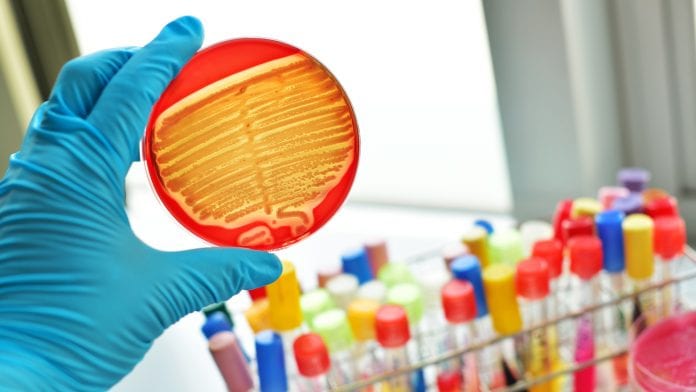
In a new study, researchers have made significant advances towards devising a novel treatment for sepsis, which they believe could also be extended to the treatment of chemotherapy damage.
Sepsis is a major health problem across the world – with an estimated 30 million cases a year, 20% of which die. Scientists at the Advanced Centre for Treatment, Research and Education in Cancer, Tata Memorial Centre in India, have now made significant strides towards devising a novel treatment for sepsis which could extend to the treatment of toxicity from chemotherapy.
Sepsis is a hyper-immune response by the body to an infection or injury, and is characterised by hyperinflammation, immune system paralysis, cell death, liver and kidney failure, blood clots, and even haemorrhage.
The high mortality rate of sepsis, combined with a poor understanding of how it occurs and lack of effective remedies, means that we need to considerably improve our understanding of sepsis onset, and devise novel strategies to treat it.
Disrupting the DNA of healthy cells
The scientists have now uncovered a new mechanism underlying the life-threatening condition, and are proposing a novel treatment strategy centred around cell-free chromatin. DNA in our cells is stored as tightly packed units called “chromatin”, which includes complexes of histone proteins and DNA.
Study author, Professor Mittra, said: “We previously showed that chromatin particles released from dying cells, into the bloodstream – called cell-free chromatin (cfCh) – can integrate into the DNA of healthy cells and disrupt it, causing cell death and inflammation.”
In the latest study, the scientists made a hypothesis that sepsis could possibly be caused by cfCh integrating into and disrupting the DNA of healthy cells; which, according to Prof Mittra, “then causes them to die and release more cfCh, thereby sparking off a terrifying ‘cascade’ of sorts that leads to more host cell death, thus leading to sepsis-related pathologies.”
The scientists prepared compounds that would “inactivate” cfCh to test the hypothesis.
Simultaneously, they induced sepsis in mice by injecting varying doses of a bacterial endotoxin called LPS. While they injected only LPS in one group of mice, they injected each of CNPs, DNase I and R-Cu2+ in the other groups. The scientists wanted to check if the cfCh-inactivating agents could reduce sepsis/death caused by LPS in the mice.
For this, they specifically looked at the following parameters: levels of cfCh in extracellular spaces in organs and circulation, levels of “pro-inflammatory cytokines”, DNA damage, cell death, and inflammation in the thymus and spleen (indicative of immune system failure, a classic sepsis sign), and other vital organs (lungs, brain, heart, small intestine), liver and kidney damage, coagulopathy and fibrinolysis, and death.
What the team found was unprecedented: all the three cfCh-inactivating agents were effective in ameliorating all the parameters related to sepsis, which were initially increased by LPS.
The effects on survival were the most notable. When the mice were given potentially fatal doses of LPS, only 10% mice in the LPS-only group survived; however, among the treatment groups, R-CU2+ and DNase I increased the survival rate drastically to 50%, while CNPs increased it to 30%.
All these findings validated the scientists hypothesis: one of the ways in which sepsis is caused is indeed the integration of cfCh into healthy host cell DNA and subsequent DNA damage, apoptosis, and inflammation, which triggers a vicious cycle and a chain reaction of further apoptosis and inflammation.
Extending treatment to chemotherapy
To verify that the cfCh-inactivating agents themselves did not harm DNA of healthy cells the scientists injected CNPs, DNase I, and R-Cu2+ into mice without any LPS.
Professor Mittra said: “We didn’t observe any DNA damage in these mice, which confirms our findings that these cfCh-inactivating agents are non-toxic.
“Prior studies have shown increased levels of cfCh in the serum of sepsis patients. Our previous studies have shown that inflammation is caused by cfCh integration and its associated DNA damage. Our new findings suggest that previous clinical trials for drugs to treat sepsis might have failed because the drugs attempted to treat the symptoms of inflammation rather than attacking the root cause, which is integration of cfCh into DNA of healthy cells and disruption of DNA.”
The promise of this study is not limited to research and treatment of sepsis.
Mittra continued: “Our group has also previously shown that the toxic side effects of chemotherapy stem from cfCh generated by healthy cells that are killed by the drugs; this creates a similar vicious cycle of more cell death that underlies the toxicity of chemotherapy.
“This study has now highlighted that the inexpensive ‘resveratrol + copper’ combination is a highly effective cfcH-inactivator. Although the current study is a pre-clinical study, we at Tata Memorial Centre have started Phase 1 and Phase 2 clinical trials in cancer patients on chemotherapy based on these findings.
“A proposed trial on sepsis patients has received approval from our Institutional Ethics Committee.”
























